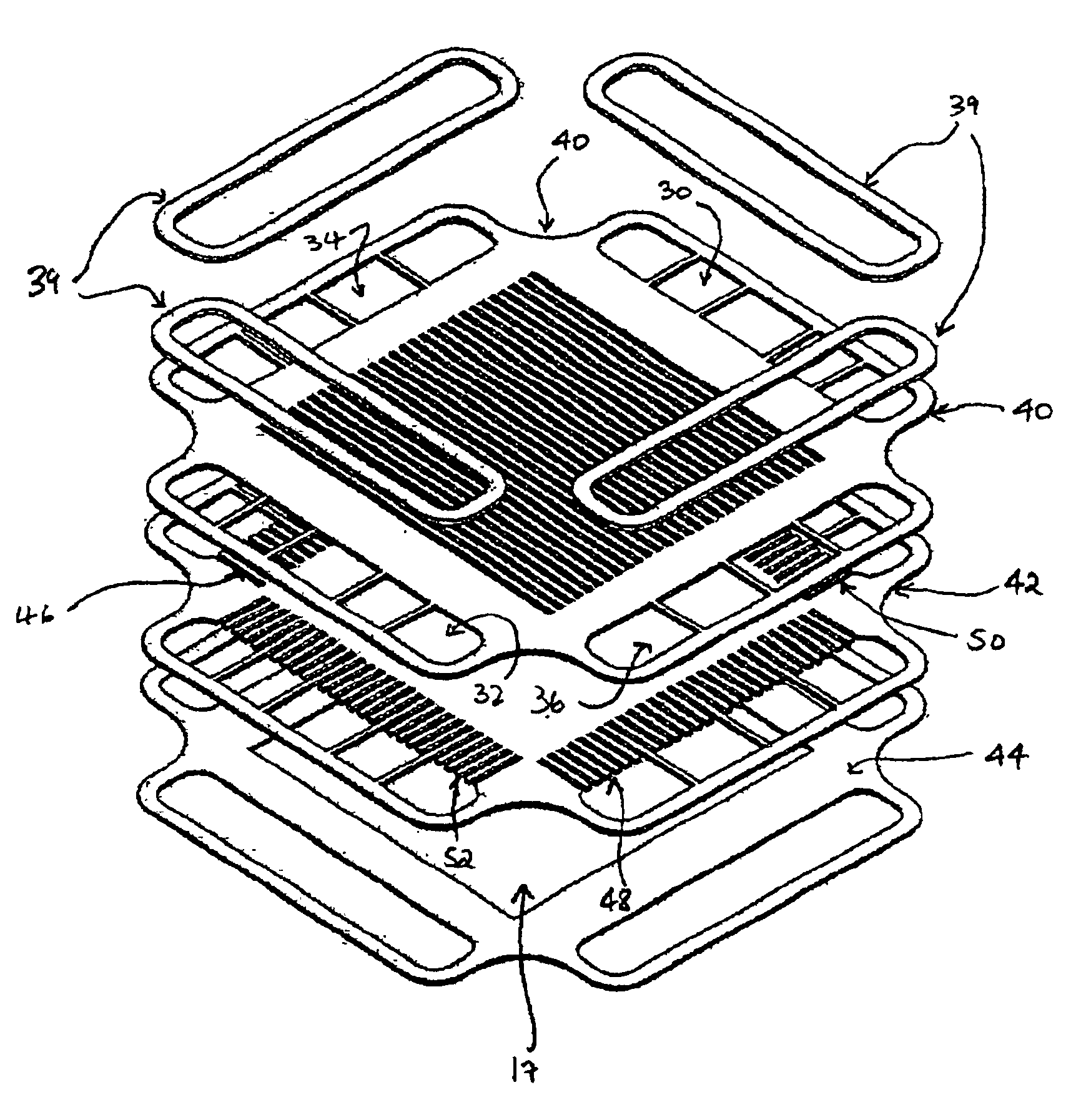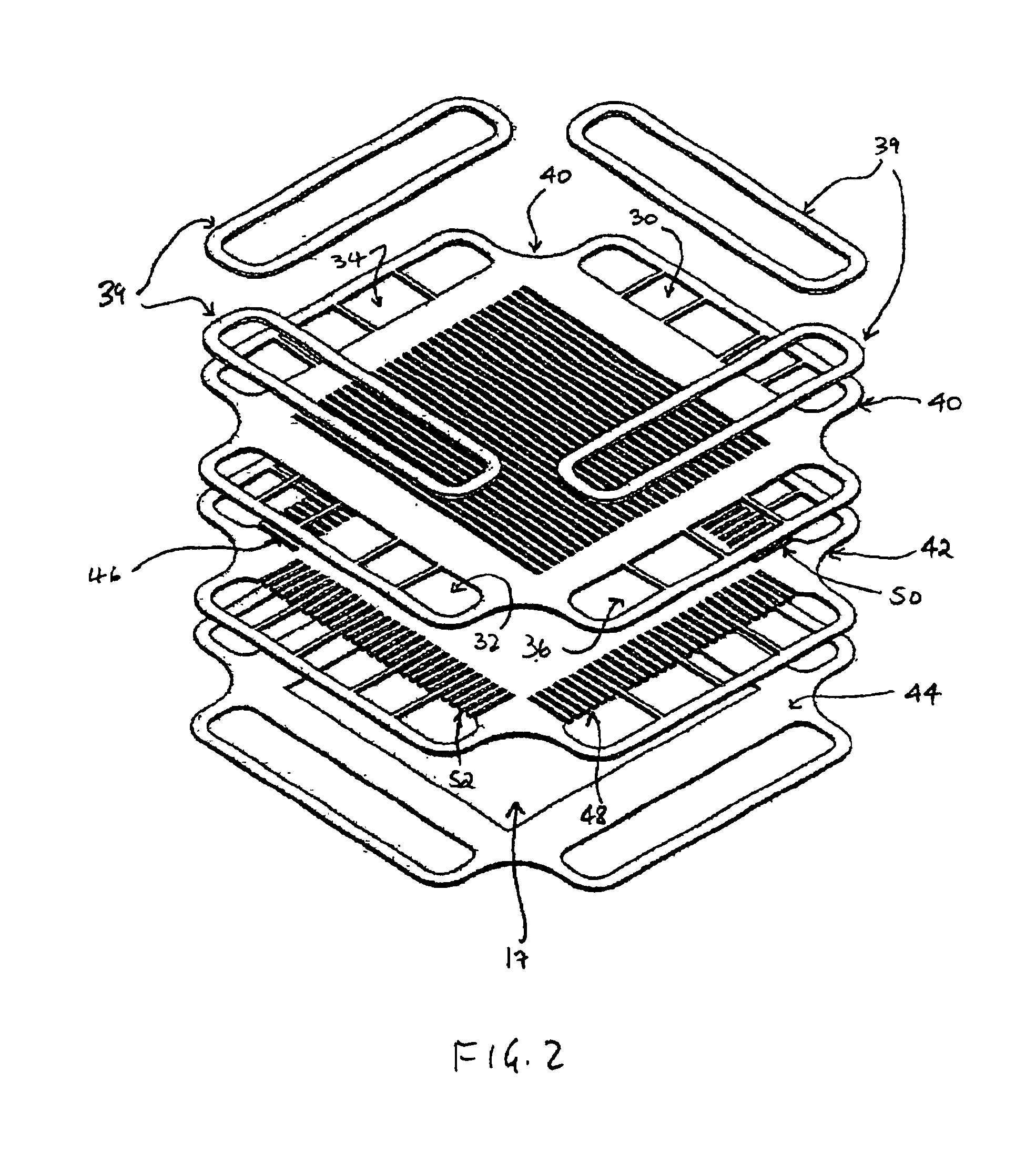Electrochemical cell interconnect
- Summary
- Abstract
- Description
- Claims
- Application Information
AI Technical Summary
Benefits of technology
Problems solved by technology
Method used
Image
Examples
Embodiment Construction
As shown in FIG. 1, a fuel cell stack (10) is comprised of several components. As used herein, a “membrane unit” consists of a ceramic membrane having an electrolyte layer and opposing anode and cathode layers. A “fuel cell unit” consists of a membrane unit, an interconnect plate and the associated seals and other elements. A fuel cell stack is comprised of a plurality of repeated fuel cell units.
The base plate (12) serves as a fixture for the stack, and provides structural support for the units that comprise the stack. The bottom interconnect plate (14) has cut into one of its surface a plurality of gas flow fields (16) that serve as conduits for moving either fuel gas or oxidant gases such that they may contact the adjacent ceramic membrane unit (18) membrane. A fuel cell membrane unit (18) operates such that one side of the cell membrane unit (18) is in contact with the fuel gas, and the other side of the cell membrane unit (18) is in contact with oxidant gasses. The membrane uni...
PUM
 Login to View More
Login to View More Abstract
Description
Claims
Application Information
 Login to View More
Login to View More - R&D
- Intellectual Property
- Life Sciences
- Materials
- Tech Scout
- Unparalleled Data Quality
- Higher Quality Content
- 60% Fewer Hallucinations
Browse by: Latest US Patents, China's latest patents, Technical Efficacy Thesaurus, Application Domain, Technology Topic, Popular Technical Reports.
© 2025 PatSnap. All rights reserved.Legal|Privacy policy|Modern Slavery Act Transparency Statement|Sitemap|About US| Contact US: help@patsnap.com



